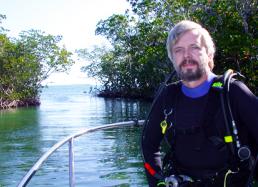About the Expedition
Mollusks may seem like small fry when compared to mammoth marine dwellers like whales, but did you know that these shellfish are the largest group of animals in the oceans—and the second largest animal group in the world! They're also important both economically and environmentally: they play a big role in the fishing and ornament (pearl and mother-of-pearl) industries and are major food source for many animals, including humans. Plus, as filter feeders, they can tell us a lot about the health of our water.
Studying & Saving Mollusks
Understanding the evolution of mollusks is key to ensuring their survival. By learning more about their DNA and family relationships, we can predict what endangered mollusks need to thrive, how different species may respond to global warming, which species should be watched as potential pests, and which may be new candidates for commercial use. Insights into their genetic code—much of which we share in common—can also help us better understand how genes evolve and the broader relationships of all living organisms.
Study Sites
To discover more about mollusk diversity and evolution, Dr. Bieler and his team have been searching the seas off the coast of Europe, the Mediterranean, the Florida Keys, the Philippines, and Bermuda to collect many of the 280 species that have been targeted for the Bivalve Tree of Life project. Called “BivAToL,” this project will reconstruct the evolutionary family tree for bivalve mollusks, which include clams, oysters, mussels, scallops, and their relatives.
The 2008 Expedition
In 2008, the team traveled to Moreton Bay, Australia, where they snorkeled, scuba-dived, sieved the shoreline, and dredged the ocean floor to recover shallow- and deep-water bivalves. Their journey netted them 21 specimens of some of their 36 target species, and a few surprise species as well! These specimens have since been divided between the participating institutions, where researchers are hard at work studying the characteristics of each species, sequencing their DNA, and mapping out the relationships between mollusk families. To learn more about the Moreton Bay expedition, explore the photo galleries, videos, and blogs from the trip.


